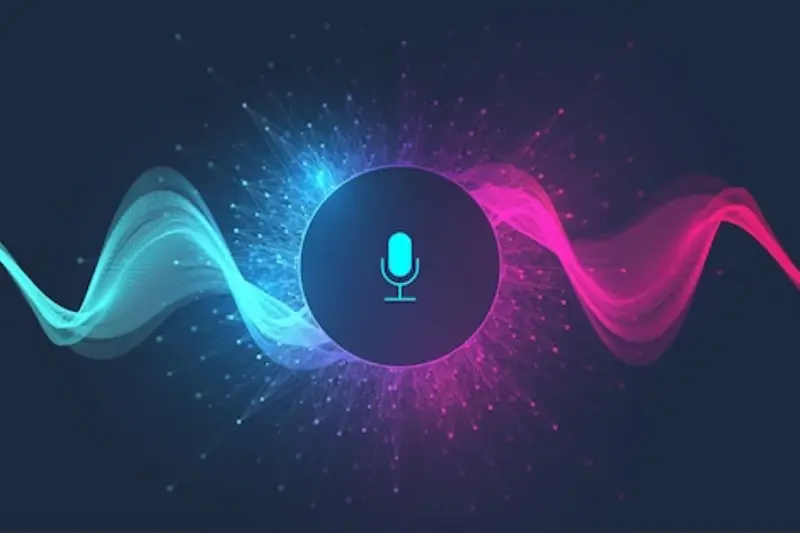10 Performance Killers That Make Users Delete Apps Immediately
We've all been there—you download an app that promises to solve a problem or make your life easier, only to find yourself frantically tapping the uninstall button within minutes. Maybe it took forever to load, crashed the moment you tried to sign up, or made your phone feel like it was about to catch fire. These experiences are maddening, and they're happening to millions of users every single day.
After eight years of building mobile apps, I've watched countless brilliant ideas fail not because they weren't useful, but because they drove users away with poor performance. The harsh reality is that users have zero patience for apps that don't work properly. They don't care how innovative your features are if they can't access them without frustration.
Users will give your app about three seconds to prove its worth before they start looking for alternatives
Performance issues are silent killers when it comes to user retention. They don't just annoy people—they destroy the trust between your app and your users before you've even had a chance to show them what you can do. The good news? Most of these problems are entirely preventable if you know what to look for. Let's explore the ten most common performance killers that send users running, and more importantly, how to avoid them.
Slow Loading Times That Test User Patience
There's nothing quite like watching a loading spinner for what feels like an eternity. I've tested hundreds of apps over the years, and slow loading times are probably the fastest way to lose users—which is ironic when you think about it!
Research shows that users expect apps to load within three seconds. Any longer than that and they start getting restless; after five seconds, most people will simply close the app and move on to something else. It's brutal, but that's the reality we're working with.
Why Apps Load Slowly
The culprits are usually pretty predictable. Large image files that haven't been optimised properly, too many network requests happening at once, or trying to load everything on the first screen rather than loading content as needed. Sometimes it's poor database queries or servers that can't handle the load.
The Real Cost of Slow Loading
What really gets me is how easily this problem can be avoided. Users don't care about your beautiful animations or fancy features if they can't even get past the loading screen. They just want to use your app and get on with their day. Every second you add to loading time is another chance for them to give up and find an alternative that actually works. Building lightning-fast mobile apps requires strategic optimization from the ground up.
Memory Hogs That Drain Device Resources
Nothing kills user retention faster than an app that gobbles up memory like a hungry monster. I've seen brilliant apps fail completely because they consumed so much RAM that users' phones started crawling to a halt. When your app uses too much memory, it doesn't just affect itself—it makes the entire device sluggish, causing other apps to crash and the phone to become unresponsive.
Memory issues often stem from poor coding practices that we see time and time again. Apps that don't properly release memory when switching between screens, background processes that keep running unnecessarily, or loading massive images without compression all contribute to this problem. The worst part? Users don't always blame your app directly—they just notice their phone getting slower and start deleting apps to free up space.
Common Memory Drains
- Unoptimised images and media files
- Memory leaks from unclosed connections
- Excessive background processes
- Large data caches that never get cleared
- Poor garbage collection in the code
The performance issues caused by memory hogging create a domino effect. Users experience slow app switching, delayed responses, and eventually their device starts closing apps automatically to free up resources. That's when users start the great app purge—and yours might be first on the chopping block.
Monitor your app's memory usage during development using profiling tools. Set memory budgets for different screens and stick to them religiously.
Poor Navigation That Confuses Users
Navigation is the backbone of any mobile app—get it wrong and users will abandon your app faster than you can say "user experience". I've seen countless apps with brilliant features fail simply because users couldn't figure out how to access them. It's heartbreaking really, especially when you know the development team put months of work into building something genuinely useful.
The problem often starts with designers trying to be too clever. They hide menu items behind obscure icons, create complex navigation flows that require multiple taps to reach basic features, or worst of all—they make navigation inconsistent throughout the app. Users expect certain behaviours from mobile apps, and when you break those expectations, confusion sets in immediately.
Common Navigation Mistakes That Drive Users Away
- Hidden or unclear menu buttons that users can't find
- Inconsistent navigation patterns between different sections
- Too many taps required to reach important features
- Confusing icon choices that don't match user expectations
- Missing back buttons or breadcrumbs
- Overly complex menu structures with too many options
The solution isn't rocket science—keep navigation simple, consistent, and obvious. Users should never have to guess where to find something; they should know instinctively. Test your navigation with real users early and often, because what seems logical to you might be completely baffling to someone else.
Crashes and Freezes That Destroy Trust
Nothing kills user confidence faster than an app that crashes mid-task. I've watched countless promising apps get deleted after just one or two crashes—users simply won't tolerate unreliable software when there are millions of alternatives available. The relationship between app stability and user retention is brutal; one moment your user is happily engaging with your content, the next they're staring at their home screen wondering what just happened.
Crashes typically happen when apps run out of memory, encounter unhandled exceptions, or struggle with device-specific quirks. Freezes are equally damaging—when an app becomes unresponsive, users don't know whether to wait or force-close it. Both scenarios create immediate frustration and long-term doubt about your app's reliability.
Our crash analytics showed that 71% of users who experienced two crashes within their first week never returned to the app
The worst part about performance issues like crashes is that they compound other problems. A user who's already frustrated by slow loading times will have zero patience for crashes. Testing across different devices, operating system versions, and usage scenarios isn't glamorous work, but it's what separates professional apps from amateur ones. Users expect apps to work reliably every single time they open them.
Battery Drain That Punishes Users
Nothing kills the love affair between a user and their app quite like watching their battery percentage plummet. I've seen so many promising apps get uninstalled not because they were bad, but because they were greedy—greedy for power, that is.
Battery drain happens when apps keep working in the background even when you're not using them. Some apps constantly check for updates, use your location, or keep the screen bright when they don't need to. Others might have coding problems that make the phone work harder than it should.
The Biggest Battery Wasters
- Apps that track your location all the time instead of only when needed
- Games that keep the screen at full brightness
- Apps with inefficient code that make your processor work overtime
- Background processes that never stop running
- Frequent server requests that keep your data connection busy
Users notice battery drain quickly—and they remember it. When someone's phone dies faster because of your app, they don't just delete it; they often leave negative reviews warning others. The fix isn't complicated: optimize background processes, use location services sparingly, and test your app's power consumption during development. Your users' battery life is precious, and treating it that way shows you respect their device and their time.
Unresponsive Touch Controls That Frustrate
Nothing kills user retention faster than touch controls that simply don't work when you need them to. I've tested thousands of apps over the years, and I can tell you that laggy buttons and unresponsive gestures are one of the quickest ways to send users straight to the delete button.
When someone taps your app's interface, they expect an immediate response—we're talking milliseconds here, not seconds. Any delay longer than 100 milliseconds starts to feel sluggish, and anything over 300 milliseconds feels completely broken. Users will tap multiple times, get frustrated, and abandon your app before giving it a proper chance.
Common Touch Response Problems
- Buttons that require multiple taps to register
- Scroll lag that makes navigation feel sticky
- Gestures that don't respond consistently
- Touch targets that are too small or poorly positioned
- Animations that block user input
The root cause is usually poor performance optimisation or UI thread blocking. When your app's main thread gets overloaded with background tasks, it can't process touch events properly. This creates that horrible delay that makes users think something's broken.
Test your app on older devices with slower processors—if touch controls feel responsive there, they'll feel lightning-fast on newer phones.
Performance issues like these directly impact user retention because first impressions matter. Users form opinions about app quality within seconds of opening it, and unresponsive controls scream "low quality" louder than almost anything else.
Network Issues That Block App Functionality
Nothing kills the user experience faster than an app that simply won't work when the network connection isn't perfect. I've seen countless apps get uninstalled because they can't handle patchy wifi or slow mobile data—and honestly, there's no excuse for it in modern app development.
The biggest culprit is poor offline functionality. Apps that show blank screens or error messages when connectivity drops are asking for trouble. Users expect basic features to work even when they're on the tube or in a building with poor signal. Smart caching and offline data storage aren't just nice-to-have features anymore—they're requirements.
Common Network-Related Problems
- Apps that freeze completely when switching between wifi and mobile data
- No retry mechanisms when network requests fail
- Overwhelming users with unhelpful error messages like "network timeout"
- Poor handling of slow connections that leave users waiting indefinitely
- Syncing issues that cause data loss when connectivity returns
The solution isn't rocket science. Build robust error handling, implement smart retry logic, and always provide meaningful feedback about what's happening. Users will forgive a slow connection, but they won't forgive an app that gives up trying to work because of it.
Conclusion
After years of building apps and watching some succeed whilst others fail spectacularly, I can tell you that performance issues are the quickest way to lose users. We've covered the main culprits—slow loading times, memory problems, poor navigation, crashes, battery drain, unresponsive controls, and network issues. Each one of these can turn a promising app into a digital ghost town.
User retention isn't just about having a brilliant idea anymore; it's about making sure that brilliant idea actually works when people try to use it. I've seen apps with amazing concepts get deleted within minutes because they took too long to load or crashed during the user's first interaction. That's heartbreaking for developers and a missed opportunity for users.
The good news is that most performance issues can be fixed if you know what to look for. Regular testing, monitoring your app's resource usage, and listening to user feedback will help you spot problems before they become deal-breakers. Your users won't give you a second chance if your app disappoints them the first time, so getting the basics right from the start is non-negotiable.
Share this
Subscribe To Our Blog
You May Also Like
These Related Stories

5 Common Review Management Mistakes That Kill Downloads

From Prototype To Perfect: How User Testing Transforms Apps





